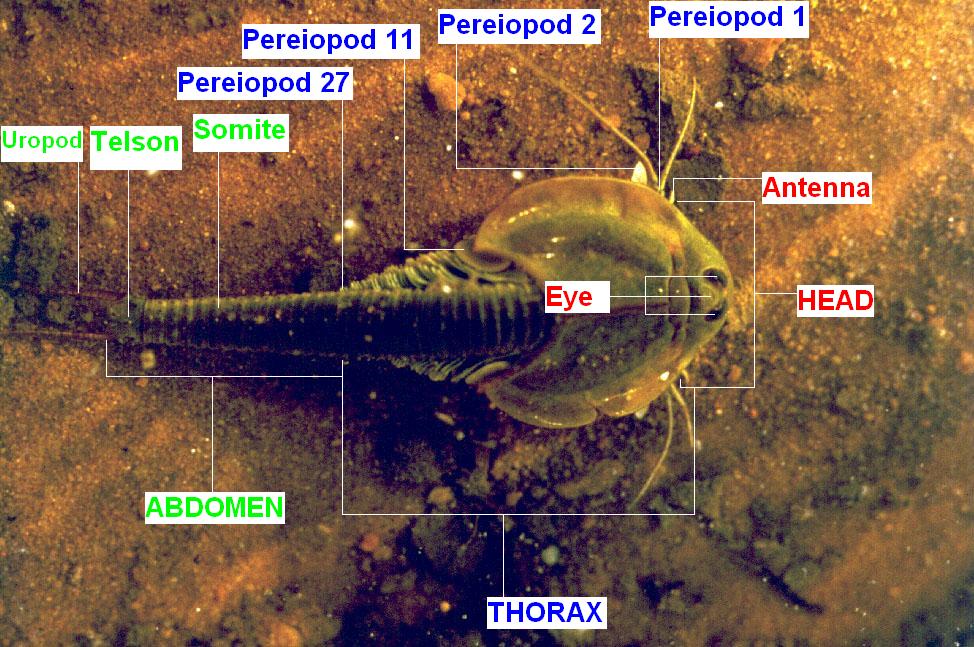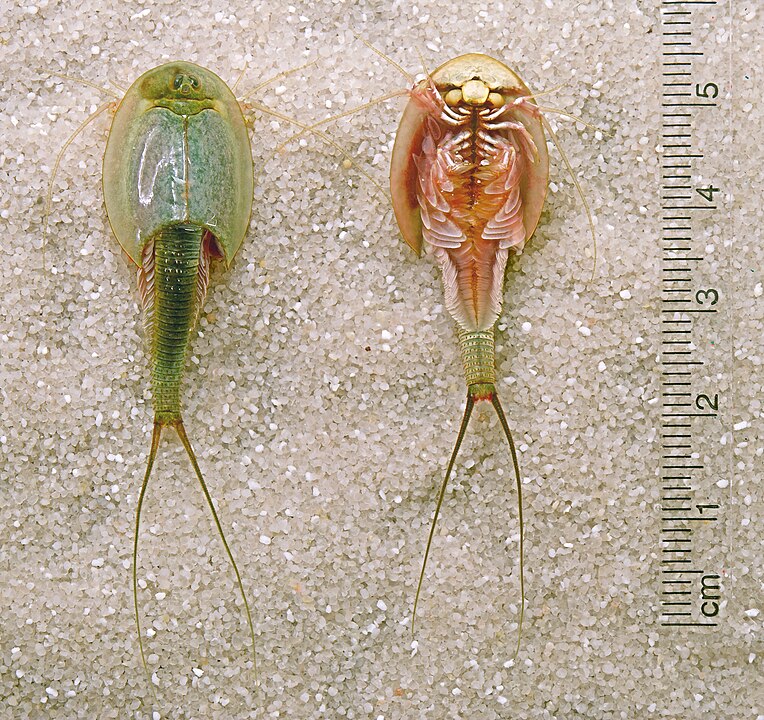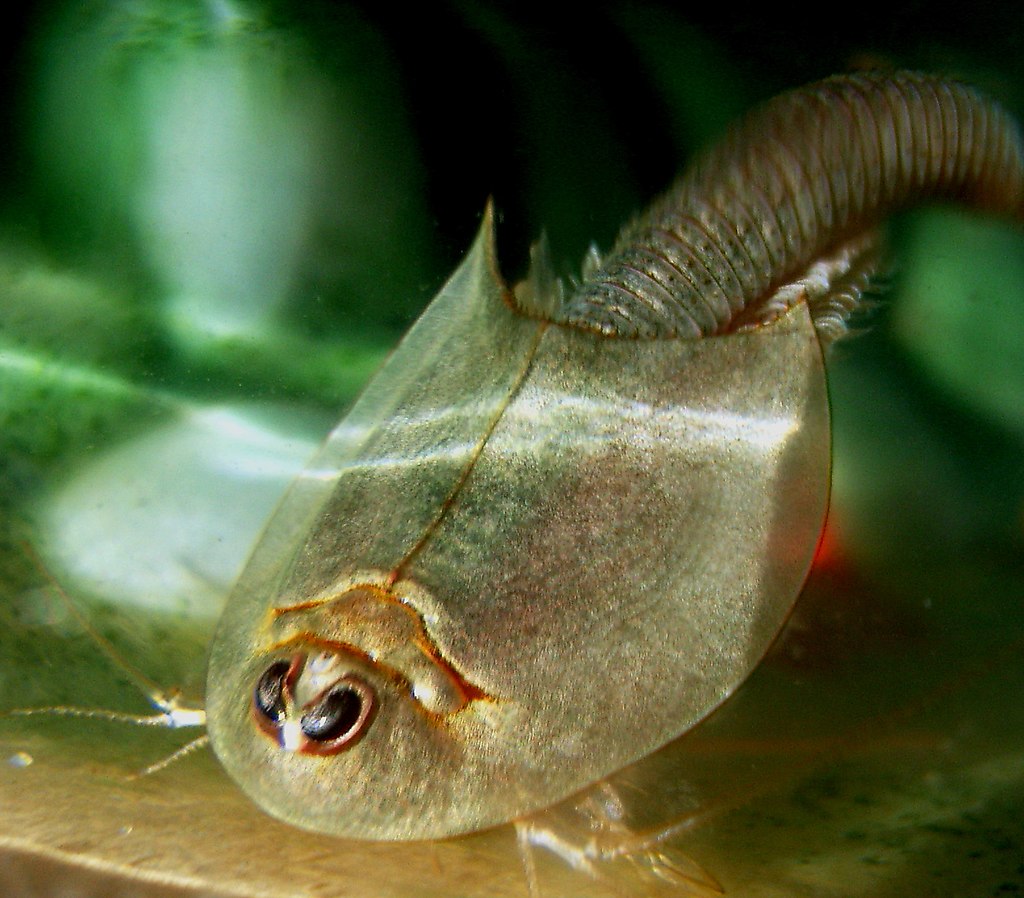In the vast world of living fossils, few creatures can boast such incredible resilience and history as the Triops, a tiny prehistoric crustacean that has swum in Earth's waters for hundreds of millions of years. Also known as the "dinosaur shrimp", the Triops has retained its morphology almost unchanged since the Devonian period, making it a true window into prehistory.
A Crustacean Outside of Time
Triops belong to the order Notostraca and are characterized by their oval-shaped body, chitinous carapace, and long forked tail. These small arthropods, which rarely exceed 10 cm in length, possess three eyes and an extraordinary ability to adapt. Their incredible resilience has made them key inhabitants of extreme environments, such as ephemeral water pools, deserts, and temporarily flooded areas.
Triops Anatomy
The body of the Triops is divided into three main parts: the cephalothorax, the thorax, and the abdomen. The cephalothorax is protected by a dorsal chitinous carapace, giving the Triops its characteristic shield-like appearance. On its head, there are three eyes: two compound eyes and a naupliar eye, which help it detect light and navigate its environment. The thorax is equipped with numerous swimming appendages, used both for movement and for filtering food. The abdomen ends with a pair of long, forked appendages, called the furca, which assist in locomotion and balance. Internally, the Triops has a simple digestive system, consisting of an intestine that runs through the body and a ventrally located mouth. Its circulatory system is open, with a tubular heart that pumps hemolymph.

Source - Wikipedia
 Source - Semanticscholar.org
Source - Semanticscholar.org
Survival Strategy: Cryptobiotic Eggs
One of the secrets behind their evolutionary success is cryptobiosis, the ability of their eggs to withstand long periods of drought. Triops eggs can remain dormant in the soil for years, enduring extreme temperatures and harsh conditions. When water returns, they hatch rapidly, allowing new generations to colonize their environment within a short time.
Distribution and Common Species
Triops are found worldwide, with species adapted to different climatic conditions. The most well-known include:
Triops cancriformis: Found in Europe, it is the oldest known species.
Triops longicaudatus: Common in North America, it prefers shallow waters.
Triops australiensis: Inhabits Australia's water pools, surviving in arid climates.
A Living Fossil: Evolution or Stasis?
The question many scientists ask is: Has the Triops never changed, or is its evolution so efficient that no major modifications are needed? The answer lies in its remarkable environmental adaptation: while many species have gone extinct or evolved drastically, the Triops has preserved a nearly unchanged body structure because it remains perfectly suited to its way of life.

Triops Between Myth and Curiosity
Its evolutionary longevity has inspired legends and fascinating stories. In some cultures, the Triops is considered a symbol of good luck, while in scientific research, it is studied as a potential model for space biology, thanks to its extreme resilience. Additionally, it is often raised for educational purposes, allowing people to observe a true living fossil in action.
Future and Evolutionary Possibilities
If environmental conditions were to change drastically, the Triops might be forced to evolve further. Some scientists hypothesize that, in response to a warmer and more unstable climate, it could develop even more advanced survival strategies, such as greater resistance to salinity or even faster reproduction cycles.
The Triops is a true natural marvel, a living witness of the dinosaur era that continues to thrive in challenging conditions. Its existence teaches us how resilient nature can be and how much we still have to learn from its secrets. Who would have thought that a tiny prehistoric crustacean could hold such an ancient and extraordinary story?








Leave a Comment